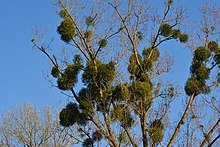
Back Ectosimbiosi Catalan Ektosymbióza Czech Ektosymbiose German Ectosimbiosis Spanish برونهمزیستی Persian Ectosymbiose French Ektosymbioza Polish
This article needs additional citations for verification. (May 2017) |

Ectosymbiosis is a form of symbiotic behavior in which an organism lives on the body surface of another organism (the host), including internal surfaces such as the lining of the digestive tube and the ducts of glands. The ectosymbiotic species, or ectosymbiont, is generally an immobile (or sessile) organism existing off of biotic substrate through mutualism, commensalism, or parasitism.[1][2] Ectosymbiosis is found throughout a diverse array of environments and in many different species.
In some species the symbiotic environment provided by both the parasite and host are mutually beneficial. In recent research it has been found that these micro-flora will evolve and diversify rapidly in response to a change in the external environment, in order to stabilize and maintain a beneficial ectosymbiotic environment.[3]
- ^ M., Key Jr., Marcus; B., Jeffries, William; K., Voris, Harold; M., Yang, Chang (March 1996). "Epizoic Bryozoans, Horseshoe Crabs, and other Mobile Benthic Substrates". www.ingentaconnect.com. Retrieved 2018-11-29.
{{cite web}}: CS1 maint: multiple names: authors list (link) - ^ Williams, Jason D; McDermott, John J (July 2004). "Hermit crab biocoenoses: a worldwide review of the diversity and natural history of hermit crab associates". Journal of Experimental Marine Biology and Ecology. 305 (1): 1–128. doi:10.1016/j.jembe.2004.02.020. ISSN 0022-0981.
- ^ Papot, Claire; Massol, François; Jollivet, Didier; Tasiemski, Aurélie (2017-05-03). "Antagonistic evolution of an antibiotic and its molecular chaperone: how to maintain a vital ectosymbiosis in a highly fluctuating habitat". Scientific Reports. 7 (1): 1454. Bibcode:2017NatSR...7.1454P. doi:10.1038/s41598-017-01626-2. ISSN 2045-2322. PMC 5431198. PMID 28469247.
© MMXXIII Rich X Search. We shall prevail. All rights reserved. Rich X Search